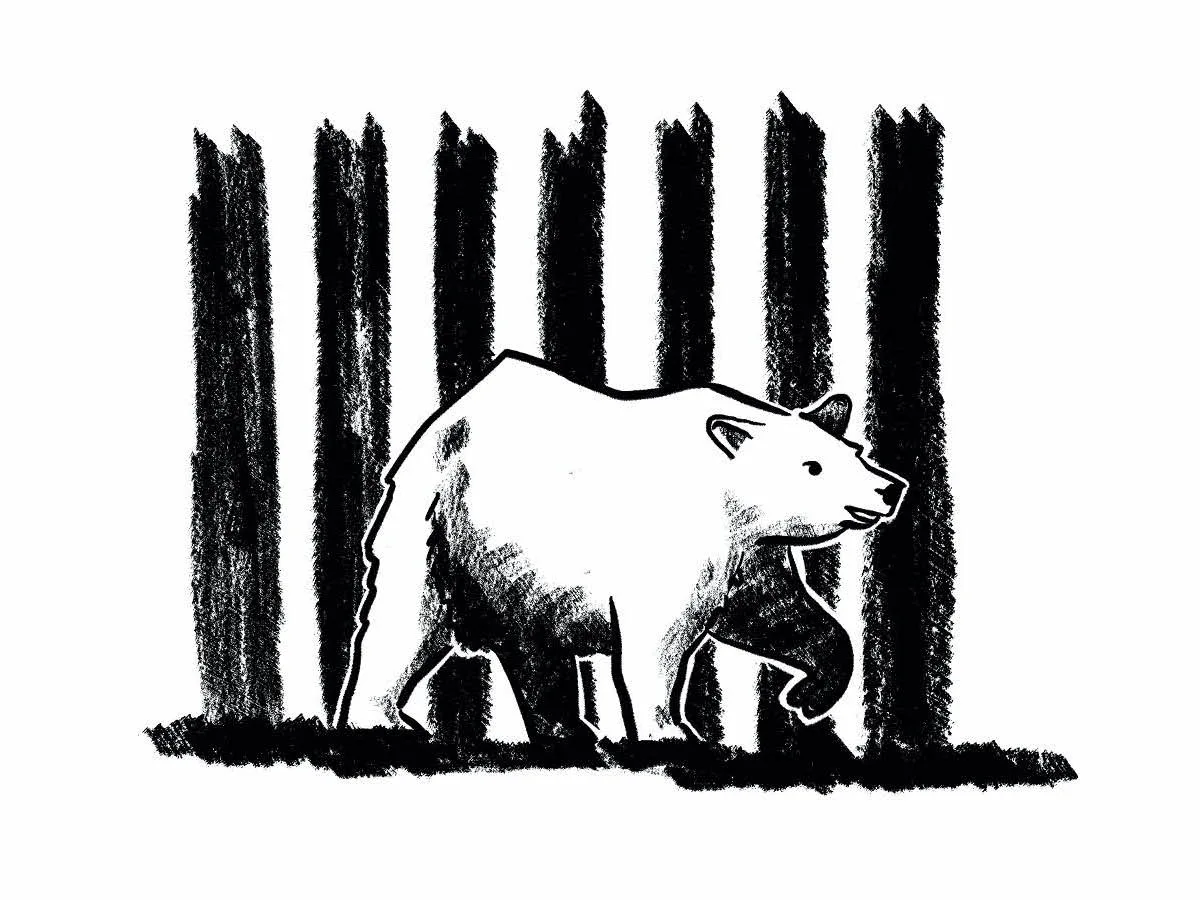
Image by Ivy Sanders Schneider

Image by Ivy Sanders Schneider
Last October, a black bear was caught on camera trying to cross the U.S.-Mexico border in southeast Arizona. In the video, the bear can be seen poking his snout through a steel fence built to block vehicles; the gaps between the posts are also too narrow for ursine shoulders. Sky Island Alliance, the binational conservation group that released the footage, has recorded members of at least a dozen species interacting with different portions of the border wall since 2020: mountain lions approaching the barrier and backtracking, white-tailed deer peering through it, a raccoon balancing on a horizontal rail. Hoping to find food or water, explore the area, or just go for a walk, these individual animals stand in for whole populations in the borderlands harmed by the U.S.’s ever-expanding security infrastructure.
As environmental lawyer Dinah Bear writes, nonhuman species have been part of the story of the border wall since its outset, invoked to justify its initial construction and — in a strange way — to provide cover for its growth since. The first federally funded border fence was built in 1911 to separate Mexican and American cattle and prevent the spread of a disease-carrying tick. In the 1990s, when fences meant for separating people were being set up south of San Diego, a visiting congressional staffer noted some long grass nearby and asked why it hadn’t been mowed, speculating that migrants could hide in it. In response, a Border Patrol agent blamed the presence of an endangered mouse. This was inaccurate. As Heather Weiner, an attorney for Defenders of Wildlife, pointed out in a memo sent to the House Subcommittee on Immigration and Claims, the only endangered rodent in the region, the Pacific pocket mouse, prefers short grass. (“Indeed, brush clearing and mowing actually BENEFIT this species,” Weiner wrote.) Nonetheless, the incident helped spur a 1997 provision that allowed the attorney general to waive various environmental protection laws “to ensure expeditious construction of the barriers and roads” along the border.
Later, the REAL ID Act of 2005 enabled the Department of Homeland Security (DHS) to bypass “all legal requirements” in order to construct migrant-deterring border infrastructure. Laws that have since been circumvented include the Endangered Species Act (jaguars, Sonoran pronghorns, and 91 other plants and animals in the region have been or stand to be affected), the Clean Water Act (the San Pedro River, the last free-flowing river in Arizona, is bisected by a stretch of the border wall built in 2020), and the Migratory Bird Treaty Act (birds will be thrown off course when thousands of stadium-style lights along the border are flipped on). The Biden administration exercised the waiver as recently as October, explicitly sidestepping dozens of legal protections for animals, plants, air, water, historic buildings, archaeological sites, and Native American graves. The (false) idea that a mouse’s security needs were receiving undue consideration has, in a way, set the stage for today’s border regime, in which a different but equally narrow idea of security supersedes all others.
As the Sky Island Alliance videos so vividly demonstrate, the severe restriction of movement at the border is an interspecies problem — one that requires an interspecies solution. In July of last year, the Sierra Club and the Southern Border Communities Coalition (SBCC) reached a settlement with the U.S. government in a lawsuit brought against the Trump administration, accusing it of illegally funneling money toward wall expansion. As part of the settlement, several dozen wildlife-friendly passageways will be added to parts of the barrier in California, Arizona, and New Mexico; environmental consultations will be required to assess the impact on human and nonhuman animals before future construction can occur on certain sections. A lawyer for the SBCC expressed hope that these consultations will “open the door to eliminating blanket DHS waivers that have made border communities a sacrifice zone for decades” — for trapped bears, for misconstrued mice, and for people.
Cara Giaimo is a science writer living in Somerville, Massachusetts.